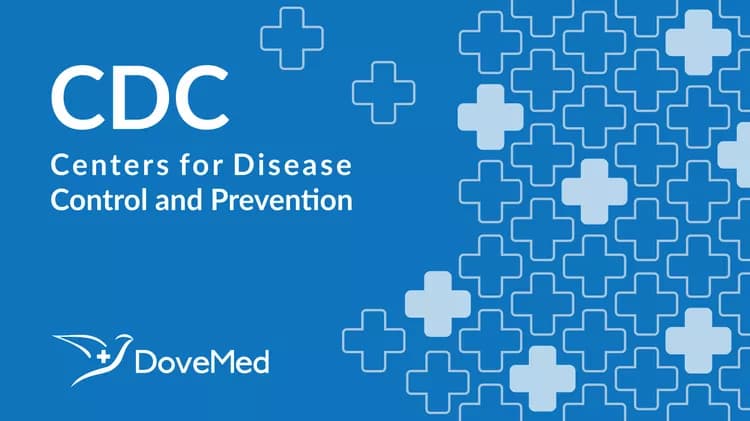
Nearly Half of All Assisted Reproductive Technology Procedures Being Done in Just Five States
Nearly Half of All Assisted Reproductive Technology Procedures Being Done in Just Five States
Five states accounted for almost half of the approximately 100,000 assisted reproductive technology (ART) procedures performed in the United States in 2000, according to a new report from the Centers for Disease Control and Prevention (CDC). The report is the first to present ART data by state of women’s residence.
Nationwide, 99,629 procedures were performed in 2000 by ART – fertility treatments in which the egg and sperm are handled in the laboratory – resulting in 25,228 live births and 35,025 infants. A live-birth includes the delivery of one or more infants. The birth of twins, triplets, or more is counted as one live birth. Because in some cases more than one infant is born during a live-birth delivery, the total number of infants born is greater than the number of live-birth deliveries.
Women who lived in California, New York, Massachusetts, Illinois and New Jersey had a total of 45,303 ART procedures and also had the highest number of infants born as a result of ART.
Assisted Reproductive Technology Surveillance – United States, 2000, is published as a surveillance summary for CDC’s August 29, 2003 Morbidity and Mortality Weekly Report (MMWR). The document expands information on geography and determinants of both ART success and multiple birth risks beyond that which appeared in 2000 Assisted Reproductive Technology Success Rates: National Summary and Fertility Clinic Report, which was published in December 2002.
With the advent of ART more than 20 years ago, American couples increasingly have turned to such treatments to overcome fertility problems. Since the first full year for which CDC collected data in 1996, the number of ART procedures nationwide has increased 54 percent from 64,724 to 99,629 in 2000.
“Various factors affect ART success rates, including patient age, type of treatments, the source of the egg, status of embryo and numerous other factors. Therefore, it is difficult to use just one measure of ART efficacy,” said Victoria C. Wright, MPH, a public health analyst at CDC’s reproductive health program and senior author of the report.
With the increase in ART procedures comes the added risk of multiple births, as multiple embryos are often implanted to boost success rates. More than half of the infants born through ART in 2000 were multiple births (twins, triplets, or more), which are often high-risk for both the infant and mother and are associated with pregnancy complications, premature delivery, low birth weight infants and long-term disability among infants. The multiple birth rate in the general population during the same period was only 3 percent.
“The risk of a multiple birth delivery increases as two or more embryos are transferred,” Wright said. She adds that the risk of a multiple delivery varies by whether the egg was the mother’s own or a donor egg, as well as whether the egg was fresh or was previously frozen and thawed. The most common type of ART procedure – which uses a freshly fertilized embryo from the patient’s own egg – accounts for 76 percent of all ART procedures. In 2000, 26,800 infants were born as a result of this type of procedure.
Of the 408 centers in the United States that perform ART, 383 provided data to the CDC. Several states (Alaska, Maine, Montana and Wyoming) had no medical centers that performed ART. States with the most ART centers were California (56), Florida (28), New York (28), Illinois (25), and Texas (24). ART use mostly corresponds with the number of clinics for the state’s population size – but not always. For example, Massachusetts ranked third in terms of number of ART procedures performed, but only 13th among all states in terms of number of women of reproductive age. However, Massachusetts mandates statewide insurance coverage of ART, thus making the procedure more affordable for a greater number of couples.
The 1992 Fertility Clinic Success Rate and Certification Act requires every medical center in the United States that performs ART to report data annually to the CDC. The ART Surveillance System is carried out by the CDC in collaboration with the American Society for Reproductive Medicine, and the Society for Assisted Reproductive Technology.
To access the latest report, please visit http://www.cdc.gov/mmwr/preview/mmwrhtml/ss5209a1.htm. For more information on CDC’s reproductive health research and programs, see http://www.cdc.gov/nccdphp/drh/.
# # #
CDC protects people's health and safety by preventing and controlling diseases and injuries; enhances health decisions by providing credible information on critical health issues; and promotes healthy living through strong partnerships with local, national, and international organizations.
Related Articles
Test Your Knowledge
Asked by users
Related Centers
Related Specialties
Related Physicians
Related Procedures
Related Resources
Join DoveHubs
and connect with fellow professionals

0 Comments
Please log in to post a comment.